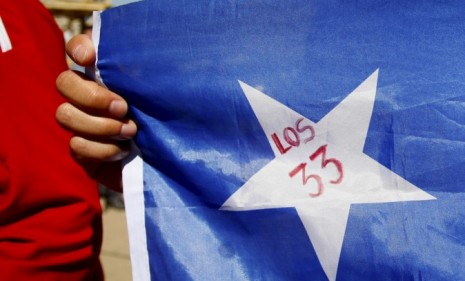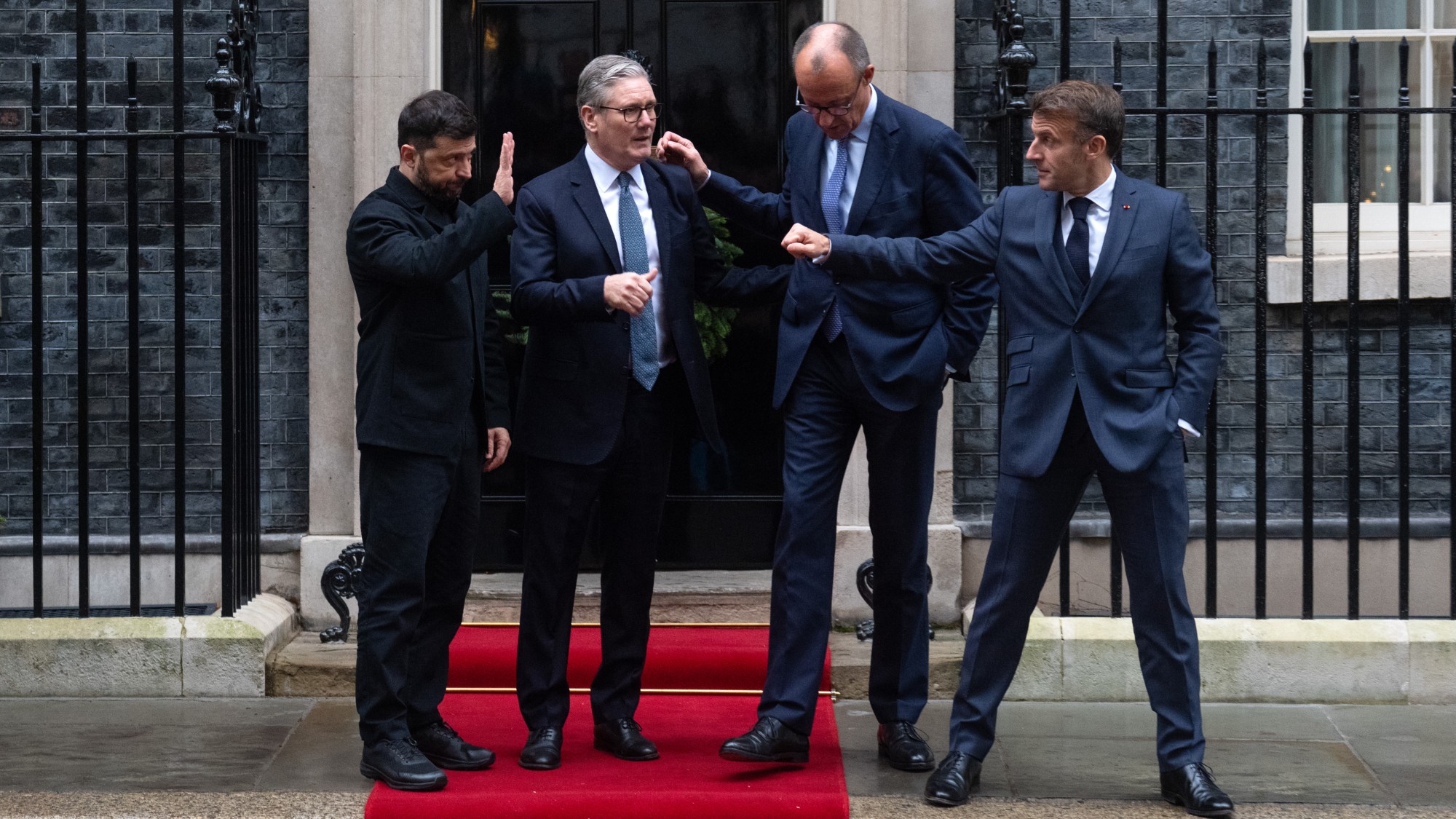Chilean miners: What happened in the first 17 days?
Despite a blood oath of silence, details are leaking out — including factions, fights, and rationed lights

As the Chilean miners' "pact of silence" about their mysterious first 17 days trapped underground starts to unravel, a story is emerging about how "Los 33" lived before rescuers first made contact and offered the hope of escape. "There are some secrets that they should keep," says Jonathan Franklin, who is writing a book on the miners, and says he knows "things that I'm never going to publish." Still, he says, the full story of "what happened down there" will come out eventually. Here's a look at what we know already:
Escape attempts
After the main tunnel collapsed, shift foreman Luis Urzua sent teams to look for an alternate way out, including one in a pickup truck (they quickly crashed in the dusty darkness). Mario Sepulveda says he found a ventilation shaft that had a poorly maintained rope-and-leather ladder, which he climbed until it stopped 150 feet up. "The ladder should have gone the whole way," he says, and when it ended, and he saw big rocks blocking the passage above, it was "a moment of utter despair." Yonni Barrios says the miners considered blasting their way out with TNT, but were concerned that "could make things worse."
The Week
Escape your echo chamber. Get the facts behind the news, plus analysis from multiple perspectives.

Sign up for The Week's Free Newsletters
From our morning news briefing to a weekly Good News Newsletter, get the best of The Week delivered directly to your inbox.
From our morning news briefing to a weekly Good News Newsletter, get the best of The Week delivered directly to your inbox.
Their daily routine
Starting with rationing the food, Urzua says a key factor that kept the miners together was their adherence to democracy. "Everything was voted on," he says. "We were 33 men, so 16 plus one was a majority." They used their watches to come up with a sleeping schedule, and "every day at noon, we would pray," Sepulveda says. "Every day. Down there, we were all... one religion." Every hour they honked one of their vehicles' horns, on the faint hope that somebody would hear. "The days went one into another," Sepulveda says. "The first week was bad, but the second week, that was terrible."
Unity and "brotherhood"?
The inspiring image of the 33 men united in common cause may be a bit exaggerated. Daniel Sanderson, a miner who had worked the shift before the collapse, says he hears about early "fist fights" among the miners, who at one point had split into three factions. What were they fighting about? "That's part of the pact," Sanderson says. Sepulveda refused to discuss the fighting, but said by day 17, "things had become very bad." The Spanish newspaper El Pais reports that five of the 33 miners, employees of a different subcontractor, had their own separatist camp until the subcontractor, after contact had been established, ordered the men to integrate.
A free daily email with the biggest news stories of the day – and the best features from TheWeek.com
Food and water
In the first 17 days, the men survived off 15 cans of tuna, sips of ultra-pasteurized milk, scraps of rotting leftovers, and oil-tainted water. "It was terrible," says Franklin Lobo. Each miner was given a teaspoon of tuna "every 24 hours, then every 48 hours and finally we were eating a teaspoon every 72 hours." On day four, the miners got a "major boost" when they found underground water running off a rock, allowing them to bathe. For a bathroom, they dug a hole and emptied the waste out into an oil drum every day.
Any thoughts of cannibalism?
No, says Sepulveda, "do you think about things like that?" He adds that he might have given it some thought "if things had got worse." Richard Villaroel says the miners did joke about cannibalism, "but only once it was over, once they found us." Still, the starvation in the first 17 days was a form of cannibalism, Villaroel says. "We started to eat ourselves up and get skinnier and skinner."
How they kept their sprits up
The miners used their electric lights — from headlamps, jury-rigged light bulbs, and trucks and tractors — sparingly, as a "treat" to "reward ourselves and boost morale," Sepulveda says. And humor played a big role, too. A self-described "natural joker," Sepulveda says a prank he played on about day 10 was a turning point for some despairing miners: "I was playing like I was dying and I said, very slowly, 'My friends, say to my family that I love them. Tell them that the money is in the...' and then I pretended to expire. The others were quiet and I held my breath. Then I could hold it no more and burst out laughing!"
Some first thoughts after the mine collapsed
Richard Villaroel: "I was afraid of not meeting my baby, who is on the way."
Yonni Barrios: "The first thing I thought is, 'I'm trapped, I'm not going to get home tonight'... [Girlfriend] Susana [Valenzuela] would have thought I was spending the night somewhere else. She's a bit jealous. So I thought I'd better get out quickly or she wouldn't believe I'd been trapped."
Mario Supulveda: "The only thought that kept going through my head was that I didn’t want to die before my children had an education. It sounds like a crazy thought... I knew [wife] Katty would be OK. She's a good-looking woman and could find another man. But what if that man didn't like my kids? I couldn't face the thought of my kids being unhappy."
Sources: Daily Mail, The Guardian, The Sun, The Independent, ABC News, AFP, AOL News
-
 The Week Unwrapped: what’s scuppering Bulgaria’s Euro dream?
The Week Unwrapped: what’s scuppering Bulgaria’s Euro dream?Podcast Plus has Syria changed, a year on from its revolution? And why are humans (mostly) monogamous?
-
 Will there be peace before Christmas in Ukraine?
Will there be peace before Christmas in Ukraine?Today's Big Question Discussions over the weekend could see a unified set of proposals from EU, UK and US to present to Moscow
-
 Quiz of The Week: 6 – 12 December
Quiz of The Week: 6 – 12 DecemberQuiz Have you been paying attention to The Week’s news?